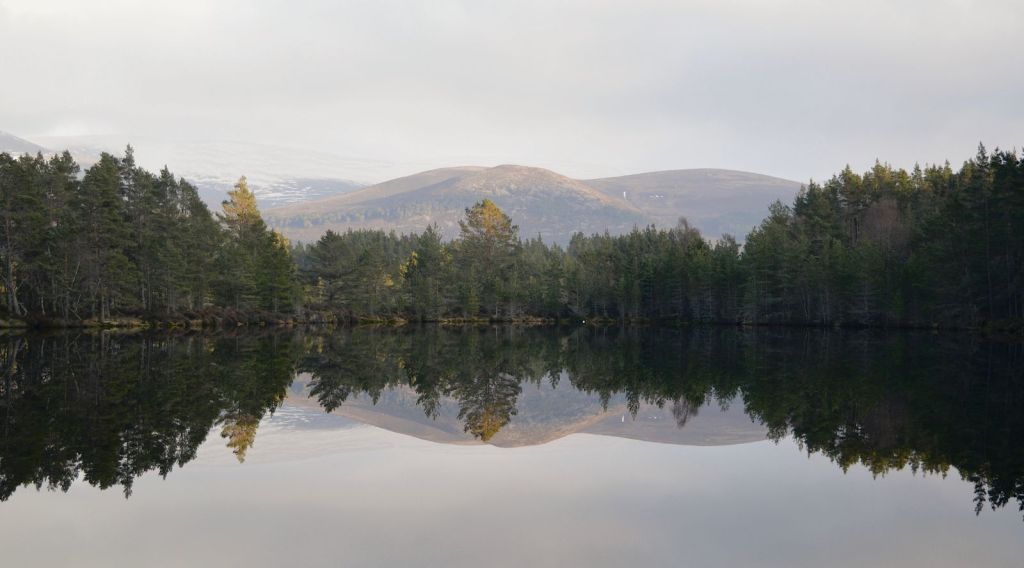It is a weekday in March a few years after everything stopped, and yours is the only car here. You are on the western edge of the Cairngorms National Park, and it is quiet, except for the sound of the wind in the trees.
The main route soon takes you to the first of four lochans. The easterly breeze blows biting waves across the dark water towards the shore, seemingly held together by the roots of the evergreens.

Even a few minutes into this walk, the views are beautiful. The kind of quintessential, ‘postcard Scotland’ scenes that feature on tourism adverts or on social media, especially like this, without the summer crowds.
But soon you see how the forest has changed since you last visited in October.

On the red trail, trees lie horizontally, cut and cleared by forestry workers, their ringed innards drying out. Further on, what had been thick evergreen and the flicker of a squirrel in the distance is now razed plantation. This could be any commercial forest in Scotland.
At the crag’s summit, looking down on the little lochs scraped into the shape of a paw print onto the valley floor, the damage from the winter storms is raw.

You wonder what it was like before.
Before computers were glued to our hands, before the heat spiralled, before the stock market, before planes and four-wheeled vehicles, before we named this place ‘uath’ for the hawthorns now hard to spot, before Alba, before us.

Glaciers would have scraped through this glen, frosty tendrils tearing corries and ridges from the rock, then leaving boulders of ice on the valley floor. They would have ground like fists into kettle holes, gently violent, melting away and leaving only cold water and silence.
Even just a century ago, you discover later from old Ordnance Survey maps, the forest only covered half of this area. Today it stretches for many miles, business veiled by beauty.

In your rucksack, you have some bars of mass-produced chocolate, a flask of tea, and two cameras. From early art and words on parchment and paintings above the places in which we pray, people have documented life on this planet.
But there seems something overcast about the way we share our lives now. Little moments packaged for attention, tumbling like storm-felled trees into other people’s social media feeds, yet quickly forgotten in the noise of everything else. Perhaps the path is pulling you in another direction.

When you return to the lower red trail, the wind has melted away to nothing, leaving the lochans smooth as mirrors.
To the west of Glen Feshie, the spring sun sinks in the sky.
Subscribe
If you enjoyed this post, did you know you can sign up by email? You’ll get a notification when there’s something new to read about slow travel and life in Scotland. Thank you for reading.

One response to “A postcard from Uath Lochans”
Beautiful read and photos, Laura!